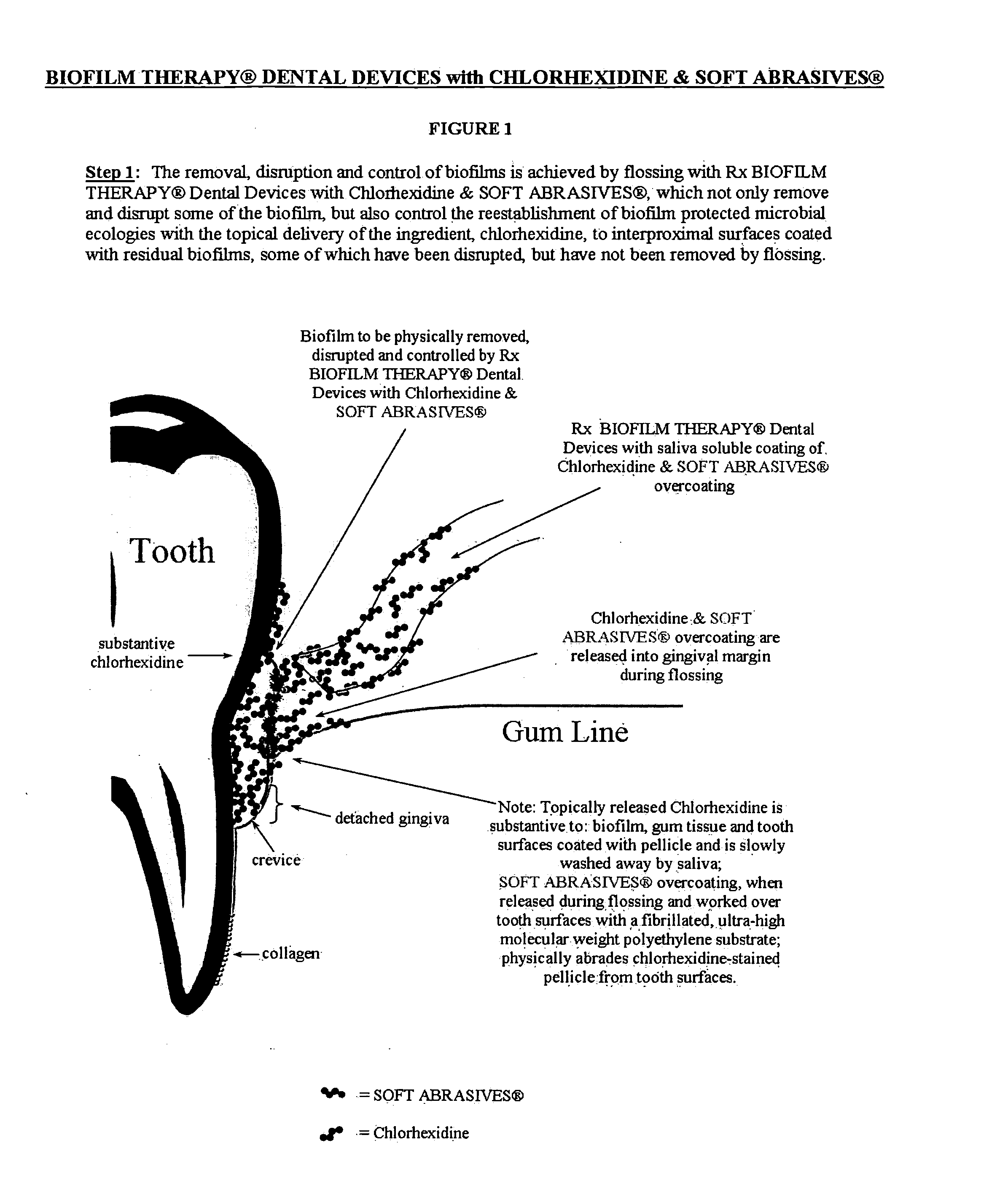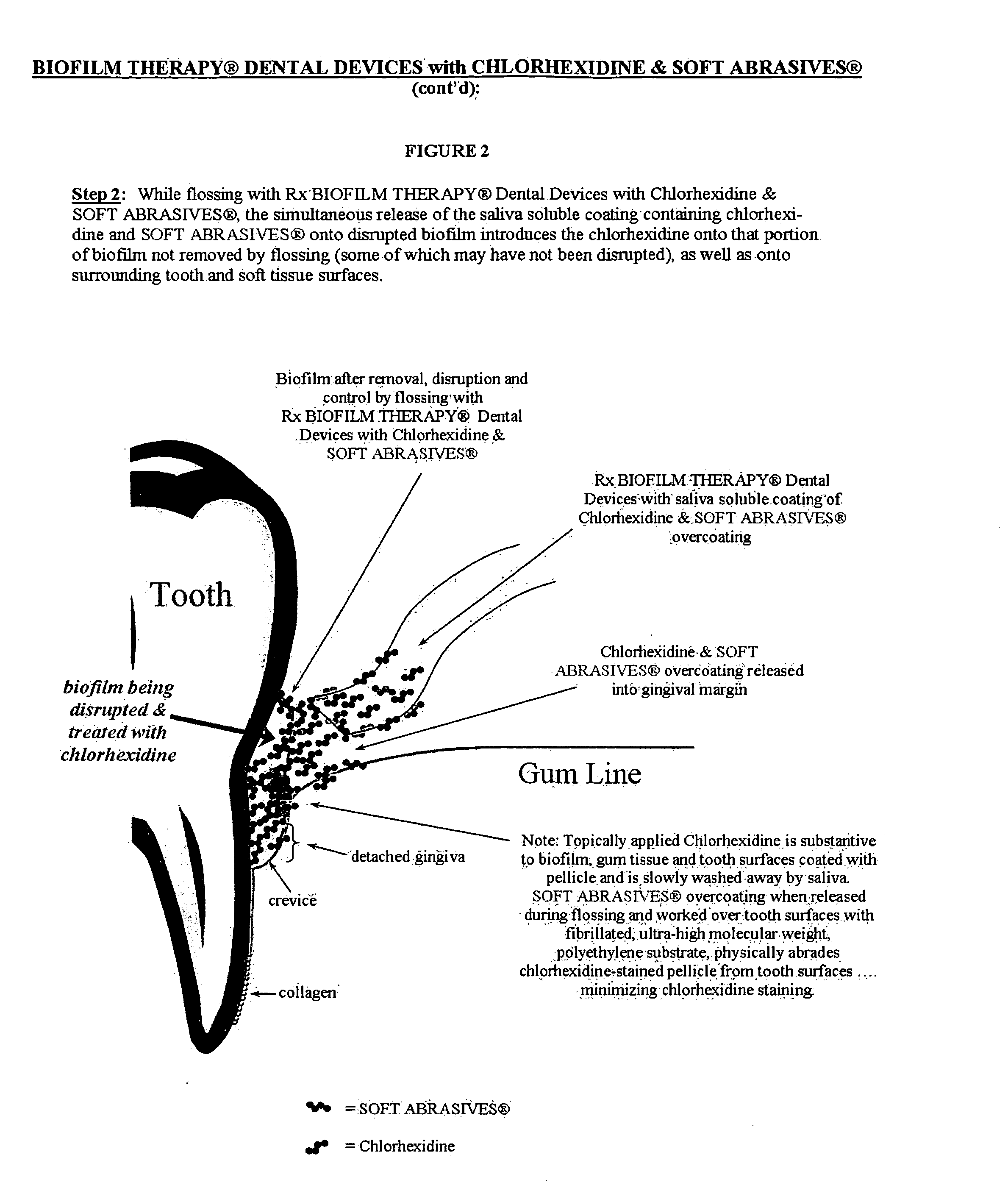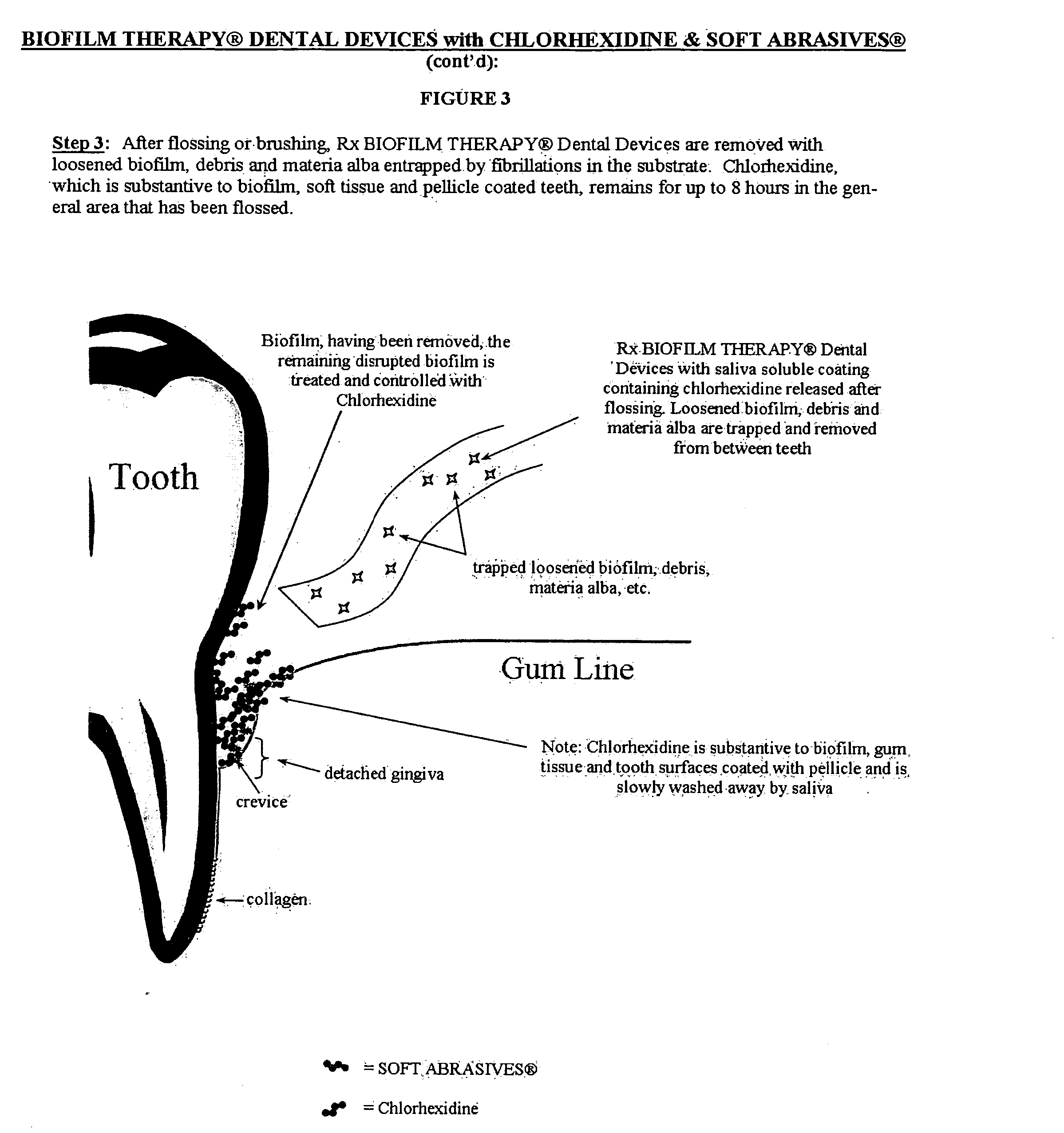Sialagogue coatings for interproximal devices
a dental device and interproximal technology, applied in dental care, tooth cleaning, dental care, etc., can solve the problems of poor breath retention, the most difficult to provide, and the cord effect reducing the efficiency of flossing, etc., to increase and prolong saliva flow, increase and prolong the effect of saliva flow and enhancing blood flow
- Summary
- Abstract
- Description
- Claims
- Application Information
AI Technical Summary
Benefits of technology
Problems solved by technology
Method used
Image
Examples
example 1
[0453] When Formula A was introduced into the textured dental floss described above at 1.0 twists per inch (tpi) as per the general process described in U.S. Pat. No. 4,911,927 where the loading tank was held at 90° C., the compression rollers at 90° C., the slub gap at 0.018″, the line speed was 1.6 yd / sec, the resultant load in was 100 mg / yd.
[0454] Under the same process conditions standard untextured nylon at 1.5 tpi loaded 50 mg / yd of Formula A. When this standard untextured dental floss was processed with different process conditions, i.e., tank temperature 80° C., slub gap (0.014), line speed 2.0 yd / sec, roller speed 2.4 yd / sec, and line tension 80 to 100 g, the resultant floss load of Formula A was only 40 mg / hg.
example 2
[0455] When Formula B was introduced into standard nylon floss at 1.5 tpi as well into as textured dental flosses of the invention at 1.0, 1.5 and 2.5 tpi under various processing conditions, the influence of texturing and twist on the load of the chemotherapeutic preparation was not evident.
[0456] In this example, the untextured floss processed with the loading tank and rollers at 90° C., the slub gap at 0.018. The line speed and roller speeds were 2.0 and 2.4 yd / sec, respectively. The line tension was 30-100 g. The load was 34 mg / yd.
[0457] Textured yarn at 1.0 and 2.5 tpi run at the very same process settings loaded 82 and 42 mg / yd of Formula B, respectively. Textured yarn of 1.5 tpi run at a slightly lower temperature, tank and roller 80° C., and a slightly lower line speed, 1.7 yd / sec, with a roller speed of 2.0 yd / sec and a lower line tension, 40-60 g, produced a load of 75 mg mg / yd of Formula B.
example 3
[0458] When Formula C was introduced at 1.5 tpi under the following process conditions: Tank 99° C., roller 80° C., gap 0.018″, line speed 1.7 yd / sec, roller speed 2.1 yd / sec, and line tension 80-100 g, the load of Formula C into this texturized dental floss was 64 mg / yd.
PUM
| Property | Measurement | Unit |
|---|---|---|
| Time | aaaaa | aaaaa |
| Time | aaaaa | aaaaa |
| Fraction | aaaaa | aaaaa |
Abstract
Description
Claims
Application Information
 Login to View More
Login to View More - R&D
- Intellectual Property
- Life Sciences
- Materials
- Tech Scout
- Unparalleled Data Quality
- Higher Quality Content
- 60% Fewer Hallucinations
Browse by: Latest US Patents, China's latest patents, Technical Efficacy Thesaurus, Application Domain, Technology Topic, Popular Technical Reports.
© 2025 PatSnap. All rights reserved.Legal|Privacy policy|Modern Slavery Act Transparency Statement|Sitemap|About US| Contact US: help@patsnap.com



